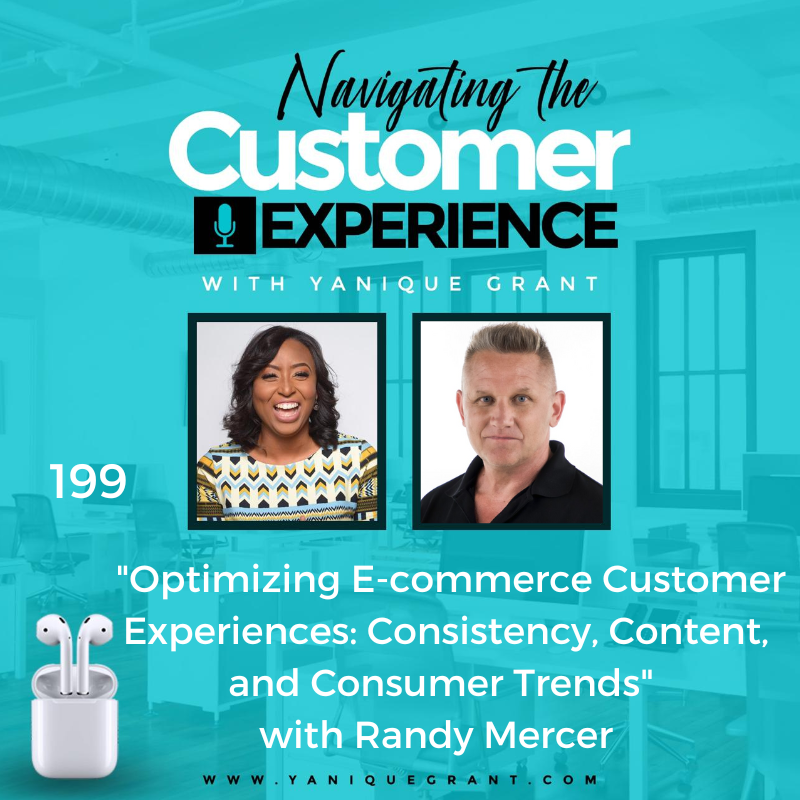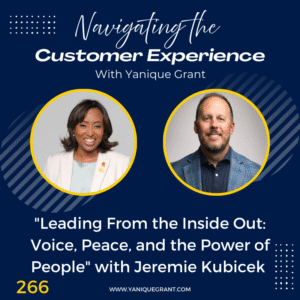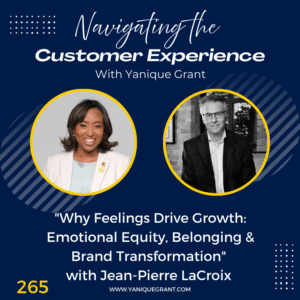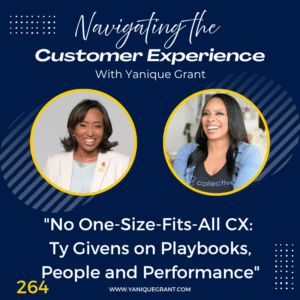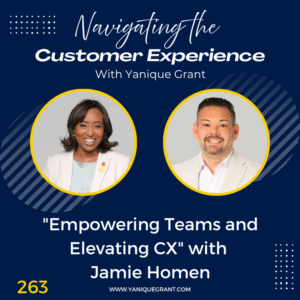Randy Mercer is an omnichannel product content expert with over 15 years of industry experience. He leads 1WorldSync’s global product management and solution architecture teams, aligning the company’s portfolio with current customer needs and emerging market trends.
A frequent commentator for national and trade media outlets covering retail and e-commerce news, Randy leverages his extensive background in item and data content alignment, e-commerce application development and solution designed to guide 1WorldSync’s strategic product roadmap and vision.
Questions
• Now, could you share with our listeners a little bit about your journey? How it is that you got from where you’re coming from, to where you are today?
• Could you tell our audience a little bit about 1WorldSync, what it is that your organisation does?
• What are some key things that if we had a listener, tapping into this podcast, who was in that similar space looking to strengthen the architecture of their user experience, whether it be the digital web, or even the face to face or even through the contact centre that you believe they should be focused on primarily at this time?
• What have been some maybe one or two emerging market trends that you’ve seen in the whole customer experience space, not just necessarily from a face to face interaction, but even digital?
• Could you share with our listeners based on your experience especially from a design perspective, what are some key things that you need to consider in order to ensure or at least to get as close to being consistent?
• Could you share with our listeners as well, what’s the one online resource, tool, website or app that you absolutely can’t live without in your business?
• Could you also share with our listeners maybe one or two books that have had a great impact on you, it could be a book that you read a very long time ago, or even one that you’ve read recently?
• Now, could you also share with our listeners what’s the one thing that’s going on in your life right now that you’re really excited about? Either something you’re working on to develop yourself or your people.
• Now, before we wrap our episodes up, we always like to ask our guests, do you have a quote or a saying that during times of adversity or challenge, you will tend to revert to this quote if for any reason you get derailed? It kind of helps to get you back on track.
Highlights
Randy’s Journey
Me: Now, could you share with our listeners a little bit about your journey? How it is that you got from where you’re coming from, to where you are today?
Randy shared that he started out as an application developer about 20 years ago, and through that, doing some customer development for a few customers, he found himself developing applications for the space that he’s in today, which is product content and sharing and distribution of that content. And fast forward, about two decades, he’s now been with 1WorldSync for about 10 years, and had been leading the product organization for about the last 5 years or so of that.
What is 1WorldSync and What Your Company Does?
Me: Could you tell our audience a little bit about 1WorldSync, what it is that your organisation does?
Randy shared that they’re a SaaS platform that sits predominantly in the retail space and they sit between large manufacturers, CPG manufacturers primarily, and large retail organizations, many of which you would know, and they allow those organizations to share master data and e-com content back and forth between the two organizations to power pretty much any channel.
Strengthening the Architecture of the User Experience Whether by Digital Web, Face-to-Face or Contact Centre
Me: So, you’re in that digital space, I was reading something that Shep Hyken sent out recently about the different acronyms that you have now, you have EX, CX, WX, UX and he was kind of giving a breakdown in his newsletter as to the different user experiences that exist on what the acronyms represent. Just thinking about the different experiences that the customer has, based on your experience and your area, what I picked up from your bio was you focus a lot on the landscape and the architecture of the experience. What are some key things that if we had a listener, tapping into this podcast, who was in that similar space looking to strengthen the architecture of their user experience, whether it be the digital web, or even the face to face or even through the contact centre that you believe they should be focused on primarily at this time?
Randy stated that when they look at their customer base, and their target market, what they’re primarily helping them with is to the consumer experience associated with e-com primarily. But they also extend that into the in store experience as well. So, they’re often very focused on for them, that consistency between the in store experience and the e-com experience, in terms of the content that they’re using to power all of that. So, a very consistent product representation across all of the channels to include the imagery, the search engine optimized copy, rich media, in the terms of videos – AR, VR, all of those things.
But aside from all of that, when you think of just how all of that comes to be something that they help their customers with a lot is what they describe as orchestrating the content or the consumer experience. How do you get from creating content, managing it, distributing it into the marketplace, and then monitoring how it’s selling for you. All the things that go into orchestrating those behaviours and those activities is just secondarily something that they help their customers with a lot.
Market Trends in the Customer Experience Space
Me: Now, in your space, your business and what you’re doing. What have been some maybe one or two emerging market trends that you’ve seen in the whole customer experience space, not just necessarily from a face to face interaction, but even digital seeing that many customers, that’s where they hang out, it’s easier for them, the convenience is better, and it’s less hassle for them.
Randy shared that the biggest thing that they recognize today is just the expectations of the consumer that’s shopping online, in terms of the types of information and the types of content that they’re expecting to see when they’re doing their shopping on any e-commerce site. Beyond that, he just mentioned the consistency related to that, what they know in the consumer surveys that they do is that consumers today are not just shopping on one site, they’re often looking at items across a number of different digital properties before they finally make a buying decision. And they’re looking for more and more content.
So, one of the expectations that they see evolving is just this expectation of consistency across these digital channels, if they don’t see that, it damages the trust they might have in the information they’re seeing. If it’s not the same, like which one of them is correct. And then sometimes they just move on to other products, and things like that.
So, the other thing that they see evolving around the online consumer experience, is the fact that consumers don’t like to read, they like to look at pictures. So, when they help their customers with the imagery that they use to depict their products, more and more, they’re starting to create imagery that contains some of the verbiage that is actually in the SEO copy. But again, consumers don’t often read that, they’re just looking at the picture so annotated images becoming more and more frequent, hotspot images where they’ve got spots on the images, where you can click and pull up some specific details.
And then hero imagery, where they take a front facing product image and they call out a few very key details about that product as a way of just informing the consumer without them having to read some of the text.
Me: Right, so you kind of have to find a way to make the information pop, making it less frustrating for them to try and dig through your website to try and find what they’re looking for, but it’s there.
Key Things to Consider in Order to Ensure Consistency
Me: You mentioned expectations and consistency and I quite agree with you as it relates to both. I find a lot of organizations, it’s not that they don’t deliver a great experience or maybe that’s their intention is to give a great experience. But the challenge is that they don’t do it consistently. Could you share with our listeners based on your experience especially from a design perspective, what are some key things that you need to consider in order to ensure or at least to get as close to ensuring because I know nothing in life is guaranteed, to get closer to being consistent?
Randy stated that it is just attention to detail. So, within their platform that allows the manufacturers to manage and prepare their data to be sharing that with the marketplace, they just provide a lot of tools that help them with the finer points of the content. A really good example of that is, a significant percentage of their customers are in the food CPG space, so selling food products into retail channel. And today in the area of transparency and an intense interest in nutritionals, allergens, those kinds of things is related to food, the key to all of that is the nutrition fact panel that you often see represented on the back of food packaging, being represented digitally online, if that is not absolutely consistent with the package itself and then maybe other digital representations of that, you’re very quickly going to damage the consumers trust in that particular product is related to what they’re putting in their body or feeding to their family.
So, they provide a lot of things, a lot of tools to help ensure that consistency all the way down to the point that they’ll assemble that information on behalf of the brand, driven by imagery of the packaging and they use OCR, so optical scanning and some AI to digitize that information. So, just an example, that’s just a really key one in their space.
Beyond that, just always goes back to the imagery, that’s the first thing that consumers are looking at when they look at a product online on any digital channel is that imagery. So, the degree to which you can distribute that all from one point of origination, which in for their customers oftentimes is their platform, the better chance you stand of having it consistent across the digital channels that you’re trying to sell that product on.
Me: And of course the consistency leads to trust because if you’re consistent then you become a brand that they trust and if the trust factor is there, then they’re more likely to continue purchasing from you. You also mentioned at the beginning, the expectations and I find a lot of times that there is a big disconnect between what is advertised and marketed, and of course, that’s what sets up the expectations of the client. And then what the client actually receives, what has been your experience in trying to ensure that there is as close an alignment as possible between customer expectations and what is actually communicated by the brand?
Randy stated that that is a really good question. And it’s something that they talk about a lot on the retailer or the e-tail side. They talked to those customers about making sure they’re not manufacturing returns, right. And you can manufacture return by doing exactly what you just described, misrepresenting the product online, somebody buys it, they think they’re getting one thing, they get it, and it’s not exactly what they thought they were buying, and so they return it. And then as the e-tailer, you’re in a worse position than if you had not even sold the thing in the first place, because you’re dealing with the expense of that return.
So, again, when they work with their brands, relative to how they can provide the best content out into the marketplace to represent their products online, oftentimes, for some of them that they’re encouraging them to just let them do it, ship the product to them, they’ll take the imagery of the product, they’ll drive the product information, and that way they know when it leaves their platform, out into whatever retailer or e-tailer is going to use that content, they’re confident that it’s absolutely representative of the product itself.
That said, they never do that without the brand sign off on it, right, they give them the chance to say, “Yep, that accurately represents my product.” But as opposed to just letting the brand provide some content that they don’t really have visibility for the origination of that. It’s just easier often if they just do it on behalf of the brand, to just makes sure it’s absolutely representative of the product.
App, Website or Tool that Randy Absolutely Can’t Live Without in His Business
When asked about an online resource that he cannot live without in his business, Randy stated that they use a lot of tools that provide digital read only representations of product data that they assemble from a lot of different sources. And often they’re using AI to do that to draw up a number of sources within their applications, create that representation as a way to visually represent the items that will be in in ecom. So, in their case, they use an application within their enterprise called Digital Catalog and it’s literally what it says. And that’s just the primary mechanism they have to cross check, what is the product going to look like when you actually do publish it online across any channel? So, that’s a key one right there.
Books that Have Had the Biggest Impact on Randy
When asked about books that have had a great impact, Randy shared that he tends to read a lot of books about product management. And so, most recently, can’t remember the titles, but two of them are the most recent ones are just around the evolution of product Management. And how folks think about doing that today in ways different than they used to. And what he means by that is at one time, it was very driven around the expectations of specific customers and trying to drive your products based on maybe some expectations that may not be pervasive to your entire community. And today, we think about it a lot more from a pragmatic perspective.
In fact, pragmatic marketing is one of those areas of materials that they leverage in their product management practice. And the net of all of that is, think very pragmatically about the solutions that you’re developing or the products that you’re managing, in a way that the solutions you’re providing are pervasive to your customer community is something that they’re willing to pay for because you’re solving a valuable problem for them. So, he thinks pragmatic marketing is probably one of the most recent things that he can refer to.
What Randy is Really Excited About Now!
When asked about something that he’s really excited about, Randy shared that for him, in their organization specifically, they’ve acquired a few technology platforms over the last to 2 or 3 years, that the fun part of that is not only having access to some additional technology to add to your solution portfolio, but just the opportunity that you have to work with just brand new sets of people that come along with whatever platform you might acquire.
And what they always find is, in addition to the value of the technology itself, it’s the value of the people that comes along with it, right. So, just new skill sets, new personalities, new energy. So, for him, he’s literally on the road right now just visiting one of their recently acquired organizations. And it’s just very exciting to him to just have that new experience and bring new people into the organization. And you get a lot of new perspectives and so for him, that’s top of mind.
Quote or Saying that During Times of Adversity Randy Uses
When asked about a quote that he tends to revert to, Randy stated yes, he just used it earlier today. And it might sound kind of negative when I says it but he always say, “Don’t come with problems, come with solutions.” And it’s just so often that folks want to expose or draw attention to an issue without much forethought to what you can do about it and just the approach that he just tries to encourage is, if you see an issue or some friction within either the organization or maybe something that you’re trying to do, think through it first, how can you solve that problem and then that’s what you bring forward. And that’s what you shed light on, versus just the issue itself.
So, he always tend to draw back on that, even with himself because the knee jerk reaction is to just moan and groan about something that isn’t working quite the way you want it to. And he just has to remind himself, think about it first and find the solution and then that makes the rest of it much easier to deal with.
Me: Thank you so much for coming on our podcast today and sharing all of these great insights as it relates to your organization and your expertise. And also some of the things that organizations can consider as it relates to consistency and expectations when they’re trying to design a landscape for customers across the different channels that they’re serving them to ensure that they have a delightful and a fantastic experience. I’m sure our listeners gained great insights from the information you shared with us today. Thank you so much.
Please connect with us on Twitter @navigatingcx and also join our Private Facebook Community – Navigating the Customer Experience and listen to our FB Lives weekly with a new guest
The ABC’s of a Fantastic Customer Experience
Grab the Freebie on Our Website – TOP 10 Online Business Resources for Small Business Owners
Do you want to pivot your online customer experience and build loyalty – get a copy of “The ABC’s of a Fantastic Customer Experience.”
The ABC’s of a Fantastic Customer Experience provides 26 easy to follow steps and techniques that helps your business to achieve success and build brand loyalty.
This Guide to Limitless, Happy and Loyal Customers will help you to strengthen your service delivery, enhance your knowledge and appreciation of the customer experience and provide tips and practical strategies that you can start implementing immediately!
This book will develop your customer service skills and sharpen your attention to detail when serving others.
Master your customer experience and develop those knock your socks off techniques that will lead to lifetime customers. Your customers will only want to work with your business and it will be your brand differentiator. It will lead to recruiters to seek you out by providing practical examples on how to deliver a winning customer service experience!

